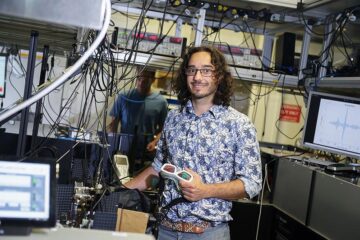Self-regulation of sex hormones in peripheral tissues such as liver

Sex hormones, produced in the gonads, also self-regulate in peripheral tissues such as the liver. This is one of the conclusions of Joaquín Villar Bécares in his PhD thesis entitled, Molecular analysis in controlling the expression of the HKE6 gene.
Biosynthesis of hormones
In his PhD, Villar Bécares proposed the molecular analysis in controlling the expression of the HKE6 gene.
To this end, he started with cloning the gene promoter, responsible for regulating its transcription. As a function of cell type, there exist transcription factors – proteins – which, bonded with the promoter, activate or deactivate the transcription. In concrete, Villar Bécares has outlined the transcription factors involved in the regulation of the HKE6 gene.
The product of this gene is an enzyme known as 17ß-dehydrogenase of steroid type 8 (17 ßHSD type 8). This enzyme participates in the biosynthesis of the female sex hormones, the estrogens. These hormones, in turn, when their levels are very high or very low, activate or deactivate the enzymes that participate in their biosynthesis so that their levels rise or fall, with the aim of keeping them stable.
The research was carried out on HepG2 cells, derived from human hepatocarcinoma because, in previous studies it was seen that the maximum expression of the HKE6 gene was found in the liver.
The author concluded that one of the transcription factors involved in the regulation of this gene known as C/EBPß, a transcription factor that links two different DNA sequences in the promoter. At least one of these sequences is essential for the gene to transcribe and produce protein.
Once the transcription factors were determined, the estradiol effect was confirmed, that of the 25-OH cholesterol and of the 6 (Il-6) interleukina on the transcriptional activity of the gene.
Contact :
Iñaki Casado Redin
Nafarroako Unibertsitate Publikoa
inaki.casado@unavarra.es
(+34) 948 16 97 82
Media Contact
Alle Nachrichten aus der Kategorie: Biowissenschaften Chemie
Der innovations-report bietet im Bereich der "Life Sciences" Berichte und Artikel über Anwendungen und wissenschaftliche Erkenntnisse der modernen Biologie, der Chemie und der Humanmedizin.
Unter anderem finden Sie Wissenswertes aus den Teilbereichen: Bakteriologie, Biochemie, Bionik, Bioinformatik, Biophysik, Biotechnologie, Genetik, Geobotanik, Humanbiologie, Meeresbiologie, Mikrobiologie, Molekularbiologie, Zellbiologie, Zoologie, Bioanorganische Chemie, Mikrochemie und Umweltchemie.
Neueste Beiträge

Neue universelle lichtbasierte Technik zur Kontrolle der Talpolarisation
Ein internationales Forscherteam berichtet in Nature über eine neue Methode, mit der zum ersten Mal die Talpolarisation in zentrosymmetrischen Bulk-Materialien auf eine nicht materialspezifische Weise erreicht wird. Diese „universelle Technik“…

Tumorzellen hebeln das Immunsystem früh aus
Neu entdeckter Mechanismus könnte Krebs-Immuntherapien deutlich verbessern. Tumore verhindern aktiv, dass sich Immunantworten durch sogenannte zytotoxische T-Zellen bilden, die den Krebs bekämpfen könnten. Wie das genau geschieht, beschreiben jetzt erstmals…

Immunzellen in den Startlöchern: „Allzeit bereit“ ist harte Arbeit
Wenn Krankheitserreger in den Körper eindringen, muss das Immunsystem sofort reagieren und eine Infektion verhindern oder eindämmen. Doch wie halten sich unsere Abwehrzellen bereit, wenn kein Angreifer in Sicht ist?…





















